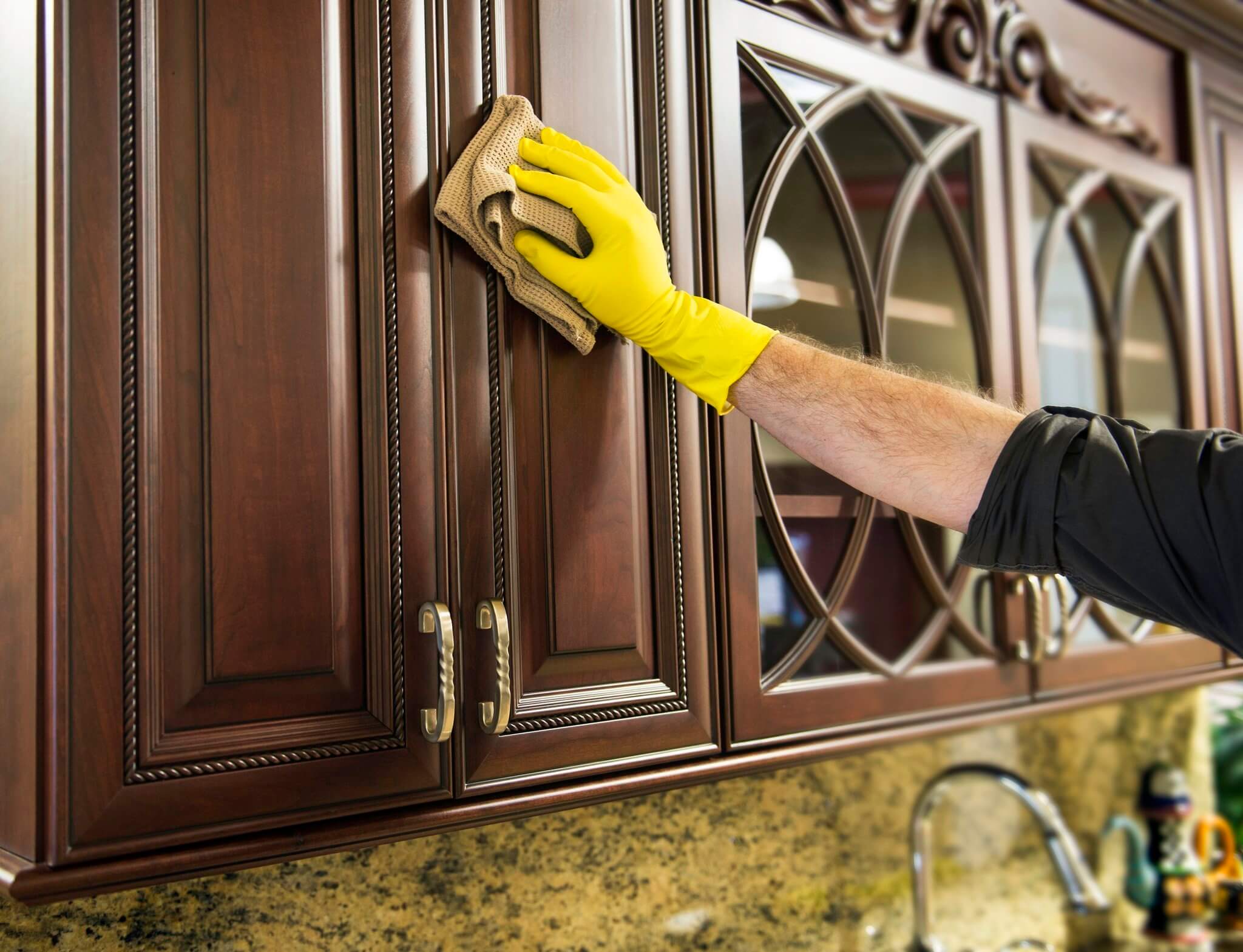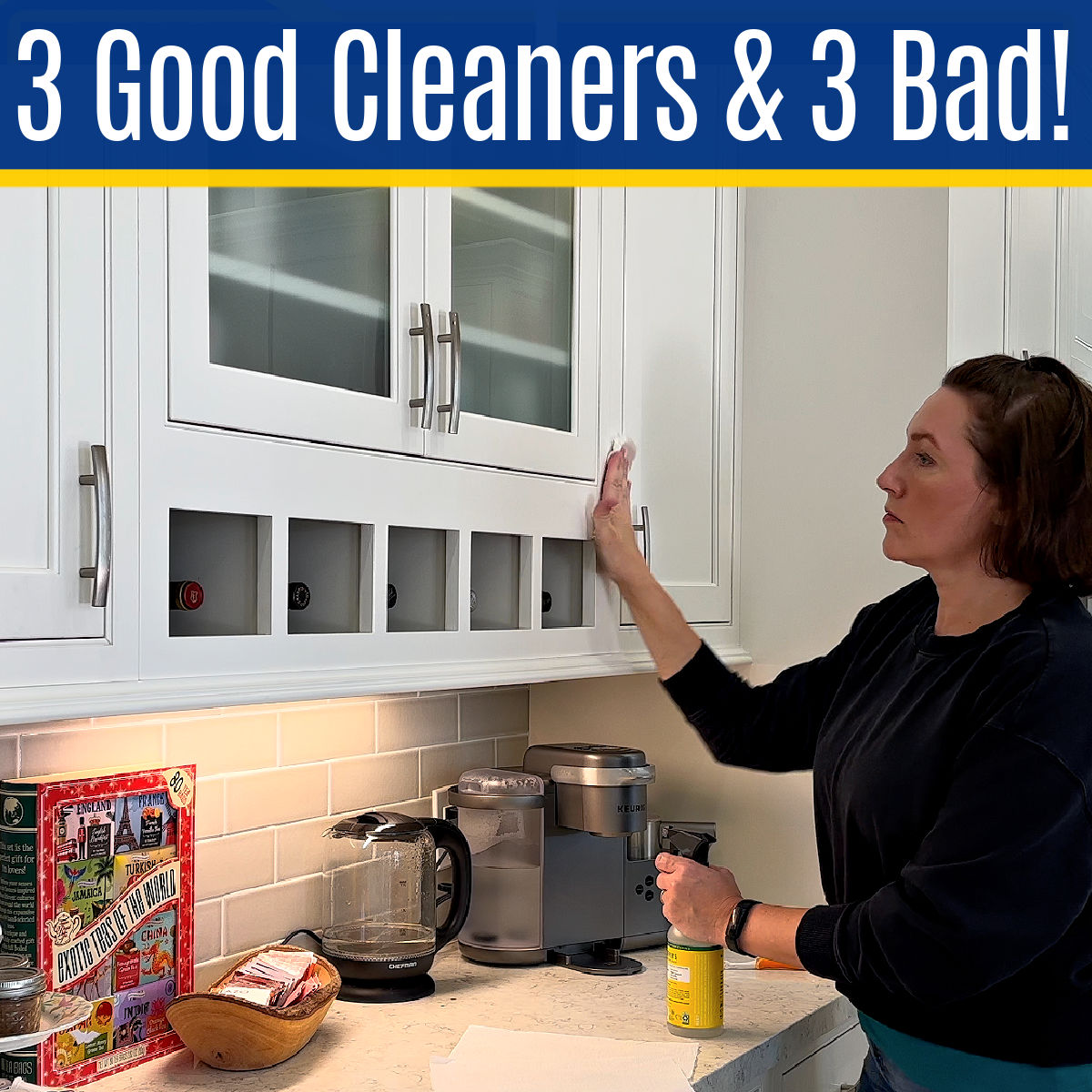Materials and Finishes

Choosing the right materials and finishes for your kitchen cabinets can significantly impact their ease of cleaning and overall aesthetic appeal. It is essential to consider both the practical aspects of maintenance and the desired style when making these decisions.
Popular Materials for Easy-to-Clean Kitchen Cabinets
The most popular materials for kitchen cabinets that are easy to clean include:
- Thermofoil: This material consists of a thin layer of plastic laminate applied to a substrate like MDF or plywood. Thermofoil cabinets are known for their durability, moisture resistance, and affordability. They are also very easy to clean as the smooth, non-porous surface repels dirt and grime. Simply wipe them down with a damp cloth and mild detergent for a spotless finish.
- Laminate: Similar to thermofoil, laminate cabinets feature a plastic coating over a core material. Laminate is available in a wide range of colours, patterns, and finishes, offering greater design flexibility. Like thermofoil, laminate surfaces are non-porous and easy to clean with a damp cloth and mild detergent.
- Painted Cabinets: Painted cabinets offer a sleek and modern look. They are typically made from MDF or plywood and then coated with a durable paint finish. While painted cabinets require more care than thermofoil or laminate, they can still be relatively easy to clean. It is essential to choose a high-quality paint that is specifically designed for kitchen cabinets and can withstand the rigours of daily use.
- Stainless Steel: Stainless steel cabinets are a popular choice for modern kitchens, offering a sleek and sophisticated look. They are also highly durable and resistant to scratches, dents, and stains. However, stainless steel can be prone to fingerprints and smudges. To maintain their pristine appearance, it is recommended to use a stainless steel cleaner and a microfiber cloth to wipe down the surfaces regularly.
Advantages and Disadvantages of Different Materials
The choice of material for kitchen cabinets should be informed by a thorough understanding of their advantages and disadvantages in terms of cleaning.
- Thermofoil and Laminate:
- Advantages: Extremely easy to clean, moisture-resistant, durable, affordable.
- Disadvantages: Limited design options, prone to scratches if not handled carefully, may not be as visually appealing as other materials.
- Painted Cabinets:
- Advantages: Wide range of colour and finish options, can be customized to match any design style, relatively easy to clean with proper care.
- Disadvantages: Can be more susceptible to scratches and dents than thermofoil or laminate, may require more frequent cleaning and touch-ups.
- Stainless Steel:
- Advantages: Extremely durable, resistant to scratches, dents, and stains, sleek and modern appearance.
- Disadvantages: Can be prone to fingerprints and smudges, requires regular cleaning with specialized products.
Finishes for Easy Cleaning
The finish applied to kitchen cabinets can also play a significant role in their ease of cleaning.
- Glossy Finish: Glossy finishes reflect light, creating a bright and polished look. They are also very easy to clean as the smooth surface repels dirt and grime. However, glossy finishes can show fingerprints and smudges more prominently.
- Matte Finish: Matte finishes are less reflective than glossy finishes, providing a more subtle and sophisticated appearance. They are also less prone to showing fingerprints and smudges. However, matte finishes can be more difficult to clean as they tend to trap dirt and grime in the textured surface.
- Semi-Gloss Finish: Semi-gloss finishes offer a balance between the reflectivity of a glossy finish and the subtle elegance of a matte finish. They are easier to clean than matte finishes but less prone to showing fingerprints than glossy finishes.
Impact of Color Choice on Perceived Cleanliness
The colour of your kitchen cabinets can significantly impact their perceived cleanliness.
- Light Colors: Light colours, such as white, cream, and light grey, tend to make a space feel larger and brighter. They also tend to show dirt and grime less prominently than darker colours.
- Dark Colors: Dark colours, such as black, navy, and dark grey, can create a more dramatic and sophisticated look. However, they can also show dirt and grime more prominently than lighter colours.
Design Features

A well-designed kitchen can be a joy to use, but a thoughtfully designed kitchen can also be a breeze to clean. By incorporating a few key design features, you can create a space that’s both beautiful and functional, and that stays sparkling clean with minimal effort.
Cabinet Door Styles
The style of your cabinet doors can have a significant impact on how easy they are to clean.
- Slab Doors: These doors are completely flat, without any raised panels or mouldings. This makes them incredibly easy to wipe down, as there are no crevices or grooves for dirt to accumulate. They offer a sleek, minimalist aesthetic, and are often favoured for modern kitchens.
- Recessed Panel Doors: These doors feature a raised panel that is recessed into the surrounding frame. This creates a subtle visual interest, while still being relatively easy to clean. However, the recessed area can trap dirt and grime, requiring a bit more attention when cleaning.
- Raised Panel Doors: These doors have a raised panel that protrudes from the surrounding frame. While they offer a traditional and elegant look, they can be more difficult to clean due to the raised panel’s intricate detailing. The crevices and grooves can collect dust and debris, requiring extra effort to clean.
Placement of Handles and Knobs
The placement of handles and knobs can also affect how easy your cabinets are to clean.
- Flush-Mount Hardware: These handles or knobs sit flush with the surface of the cabinet door, making them easier to clean. There are no protruding edges to catch dirt or grime. Flush-mount hardware can be particularly useful for cabinets in high-traffic areas, where they are more likely to be touched.
- Handles and Knobs on the Side: Handles and knobs placed on the side of the cabinet door are easier to clean than those positioned in the centre. This is because the handles are less likely to be touched during daily use, reducing the amount of dirt and grime they accumulate.
Open Shelving
Open shelving is becoming increasingly popular in modern kitchen designs. Not only does it offer a stylish and minimalist aesthetic, but it also makes cleaning a breeze.
- Easy Access: Open shelving allows for easy access to all your items, making it simple to wipe down the shelves and clean the items stored on them.
- Visual Appeal: Open shelving can create a more open and airy feel in the kitchen, while also showcasing your beautiful dishes and cookware.
- Less Clutter: Open shelving can encourage you to keep your kitchen tidy and organized, as you can see everything at a glance.
Cleaning and Maintenance Tips: Kitchen Cabinets Easy To Clean

Keeping your kitchen cabinets looking their best requires a bit of effort, but it’s worth it. By following these simple tips, you can keep your cabinets clean and free of stains, ensuring they remain a focal point in your kitchen for years to come.
Cleaning Different Cabinet Materials
The cleaning process for your kitchen cabinets will depend on the material they are made of. Different materials require different cleaning techniques to prevent damage.
- Wood Cabinets: Wooden cabinets are a popular choice due to their natural beauty and durability. To clean them, use a damp cloth with mild soap and water. Avoid harsh chemicals, as they can damage the finish. For stubborn stains, you can use a wood cleaner specifically designed for kitchen cabinets. Regularly apply a wood polish to maintain their shine and protect them from scratches.
- Painted Cabinets: Painted cabinets are known for their versatility and easy maintenance. Use a damp cloth with mild soap and water to clean them. Avoid abrasive cleaners, as they can scratch the paint. For greasy stains, you can use a mild dish soap and warm water solution. Remember to dry the cabinets thoroughly to prevent watermarks.
- Laminate Cabinets: Laminate cabinets are a cost-effective and durable option. To clean them, use a damp cloth with mild soap and water. Avoid abrasive cleaners and harsh chemicals, as they can damage the laminate surface. For stubborn stains, you can use a non-abrasive cleaner specifically designed for laminate surfaces.
- Stainless Steel Cabinets: Stainless steel cabinets are known for their modern look and durability. To clean them, use a damp cloth with a mild dish soap solution. For stubborn stains, you can use a stainless steel cleaner. Avoid using abrasive cleaners or harsh chemicals, as they can damage the finish.
Preventing Stains and Spills, Kitchen cabinets easy to clean
Preventing stains and spills is key to maintaining the cleanliness of your kitchen cabinets.
- Regular Cleaning: Regular cleaning helps prevent stains from setting in. It’s best to wipe down your cabinets after each use, especially after cooking.
- Protective Coatings: Apply a protective sealant to your cabinets, especially if they are made of wood. This will help prevent spills from soaking into the surface and causing stains.
- Use Coasters and Trivets: Use coasters and trivets to protect your cabinets from heat and spills. This is especially important when placing hot dishes or drinks on your countertop near the cabinets.
- Keep Food and Beverages Away: Avoid storing food and beverages directly on your cabinets, as this can lead to spills and stains.
Importance of Regular Maintenance
Regular maintenance is essential for preserving the cleanliness and appearance of your kitchen cabinets.
- Dusting and Cleaning: Regularly dust and clean your cabinets to prevent dirt and grime from accumulating.
- Inspecting for Damage: Inspect your cabinets regularly for any signs of damage, such as scratches, chips, or cracks. Repair any damage promptly to prevent further deterioration.
- Replacing Worn-Out Hardware: Replace any worn-out hardware, such as hinges and handles, to keep your cabinets functioning properly and looking their best.
Safe and Effective Cleaning Products
When choosing cleaning products for your kitchen cabinets, it’s important to select safe and effective options.
- Mild Soap and Water: This is a safe and effective cleaning solution for most kitchen cabinet materials.
- Dish Soap: Dish soap can be used to clean greasy stains on painted and laminate cabinets.
- Wood Cleaner: For wooden cabinets, use a wood cleaner specifically designed for kitchen cabinets.
- Laminate Cleaner: For laminate cabinets, use a non-abrasive cleaner specifically designed for laminate surfaces.
- Stainless Steel Cleaner: For stainless steel cabinets, use a stainless steel cleaner.
Remember, always test any cleaning product on a small, inconspicuous area of your cabinets before applying it to the entire surface. This will help ensure that the product is compatible with your cabinet material and won’t cause any damage.
Kitchen cabinets easy to clean – Nggak usah pusing lagi ngebersihin lemari dapur yang penuh minyak. Cukup pake kain lap, sekejap bersih deh! Nah, biar makin aman, coba deh pasang keyless cabinet door locks biar anak-anak nggak ngubek-ngubek isi lemari. Gitu kan, biar dapur tetep kinclong dan barang-barang aman.
Nggak usah pusing lagi ngebersihin lemari dapur, udah kayak ngurusin anak kecil! Biar cepet dan gampang, mendingan pasang pintu lemari baru aja, yang modelnya simple dan praktis. Kalo mau cari yang bagus dan cepet, coba cek fast cabinet doors bbb aja, dijamin nggak nyesel! Nah, kalo udah punya pintu lemari baru, bersihinnya tinggal dilap-lap, gampang kan?
